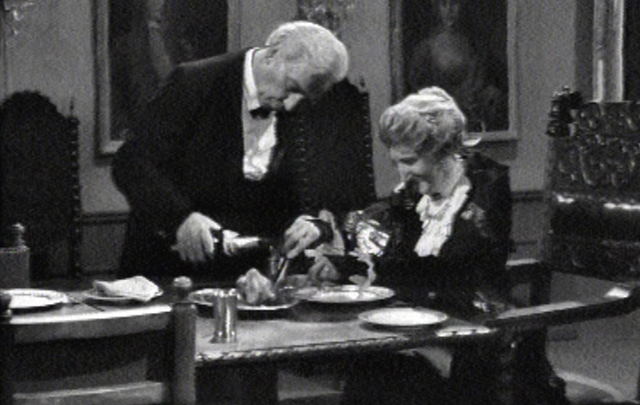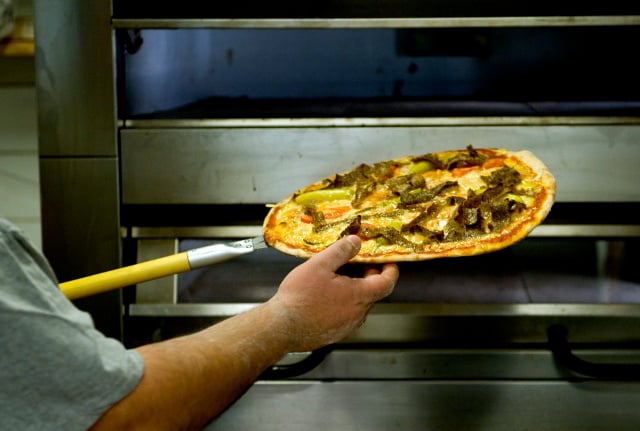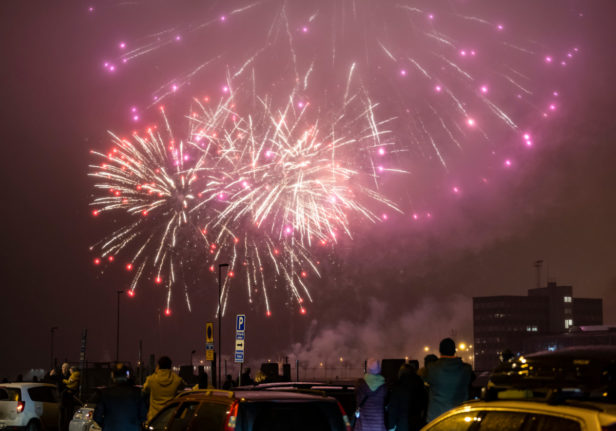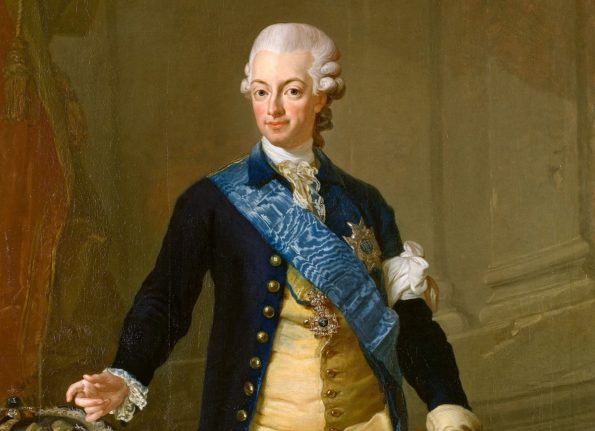1. Dinner for One
“The same procedure as every year, James.”
This English line has become a familiar catchphrase in Sweden. Swedish TV first broadcast Dinner for One (Grevinnan och betjänten in Swedish, literally “The Countess and the Butler”) in 1969 and it has been shown nearly every year on New Year’s Eve since 1976. Despite being a British stage sketch in English with British actors, it was never shown in Britain, so even British visitors are usually very puzzled when their Swedish hosts insist on watching this obscure piece of slapstick theatre.
There are two versions – the original which is shown in Germany and Denmark and a shorter Swiss one which is shown in Sweden. As one person told us: “The Swede sat in stitches while everyone else stared blank-faced. It was the most awkward thing I’ve ever done.”

2. Ivanhoe
Sweden’s perhaps weirdest New Year’s tradition takes place on January 1st, when – despite many an aching head and probably a few sore tummies after the previous night’s revelry – many Swedes settle in for their annual treat: the 1982 film adaptation of Ivanhoe.
It was first shown in Sweden that same year by public broadcaster SVT. These days it’s on TV3, but if you don’t have access to that channel, you could always follow Swedish newspapers’ Ivanhoe live blogs (yes, they do this) or the hordes of Swedes pestering poor Sam Neill, who plays the bad guy, on Twitter.
That's about 35 years of being hated by all of Sweden . Oh boy . https://t.co/yEVbo0Mz1N
— Sam Neill (@TwoPaddocks) January 1, 2016
3. Lord Tennyson
The Swedish translation of Alfred Tennyson’s old poem Ring Out, Wild Bells (Nyårsklockan) has been read out at Stockholm outdoor museum Skansen since the mid-1890s. This day it is shown live by public broadcaster SVT and at least the older generation of Swedes will still gather in front of their television to watch it as the clock turns to midnight before watching the fireworks.
It is usually read by a famous actor (this year the honour falls to Tomas von Brömssen). Ideally, they should time the poem so that they finish it just as the bells strike midnight (if they don’t manage that, the whole performance will be labelled a failure by the tabloids the next day).
Watch a version from 1930 here (only available in Sweden).
4. Kebab pizza
The kebab pizza is exactly what it sounds like: a pizza topped with doner meat and finished with ambiguously titled “kebab sauce”. It also happens to be one of the most popular forms of pizza ordered by Swedes (apologies to Italy and Turkey). According to pizza delivery company Online Pizza, Swedes order the food more on New Year’s Day than any other day of the year.
It is not an official tradition yet, but that is certainly not for lack of trying. A Liberal MP even once proposed to parliament that January 1st should be turned into Kebab Pizza Day to honour the culinary monstrosity. Best combined with Ivanhoe and a fortnight’s detox of vegetables.

5. The Hug
Covid and seasonal influenza gives you a chance to avoid this, but usually, when the clock strikes midnight, be prepared to hug every single person in the room. You may already have forgotten their names after shaking hands with them earlier in the evening, but you are now Hugging Friends Forever. Don’t even think about going for a French air kiss on the cheek instead.
6. The Bubbles
Time for a drink to help you through all this confusing Swedish etiquette? Don’t help yourself to whatever is open in the kitchen. Swedes bring their own alcohol to parties, often keeping it in a neat plastic bag throughout the night. The same rule sometimes, but not always, applies for non-alcoholic beverages.
The rules are slightly more flexible on New Year’s Eve, but just to be on the safe side it is probably best to bring your own small bottle of champagne if you want to have a toast at midnight.

These are my bubbles. Get your own bubbles. Photo: Janerik Henriksson/TT
Article first published in December 2016 and updated in 2023.



 Please whitelist us to continue reading.
Please whitelist us to continue reading.
Interesting…….when I first went to Sweden 30 years ago, there was a definite distance between huggers of about 15cm – 20cms…..over the years this has come down drastically……what a difference Europe makes!!!……Michael